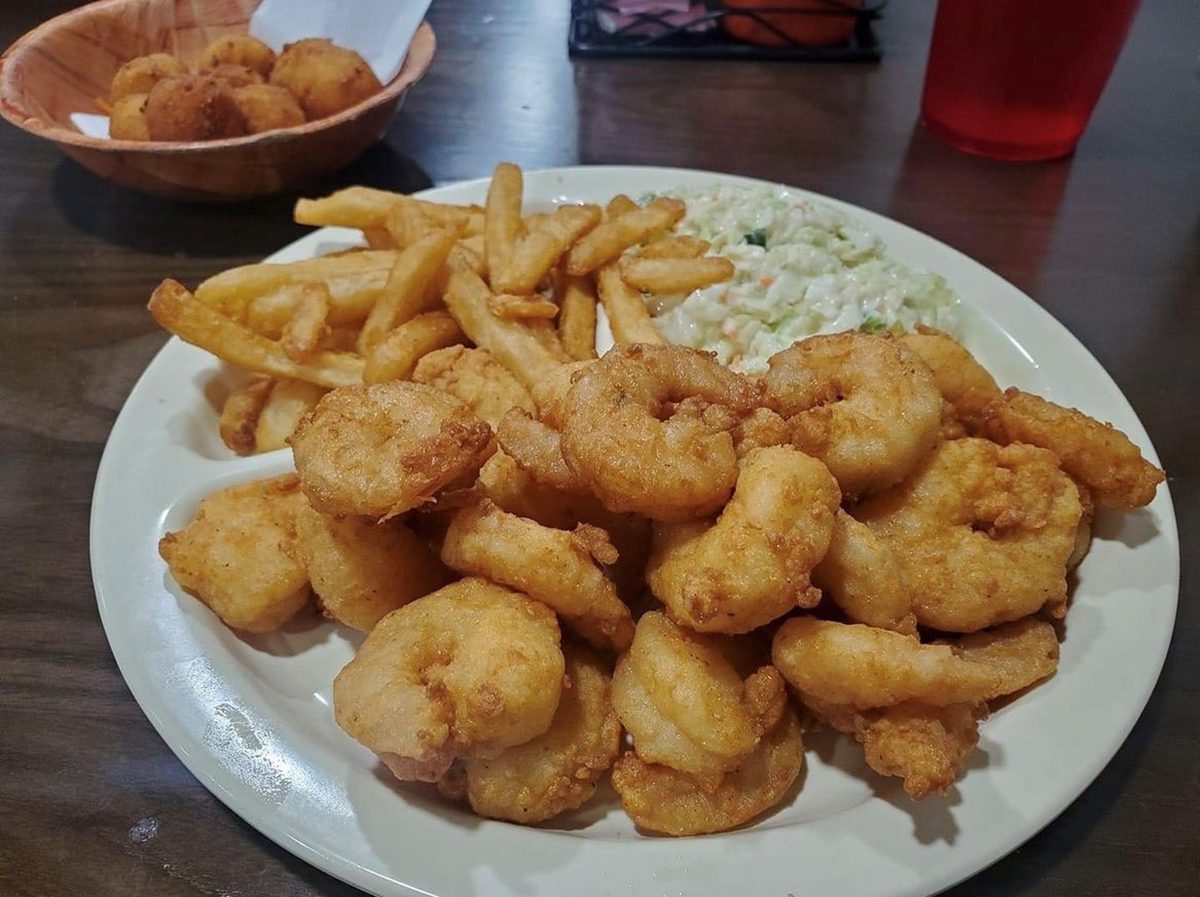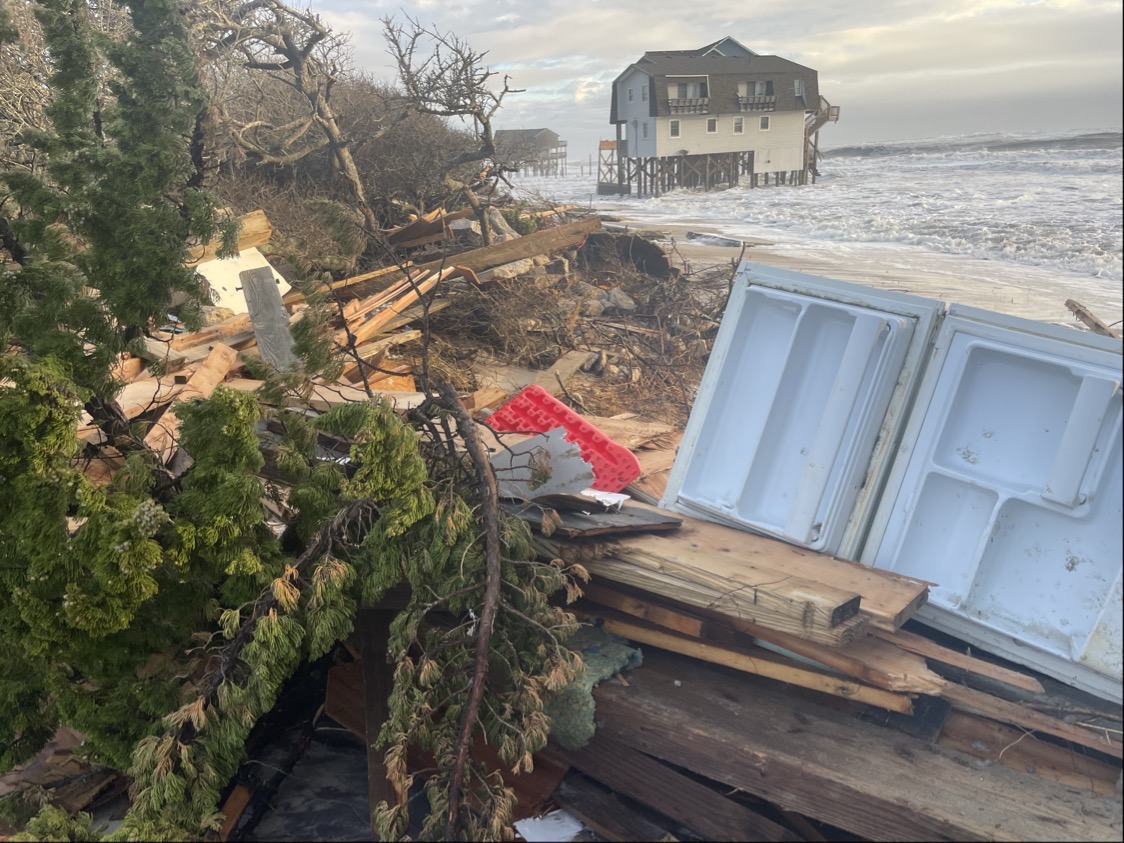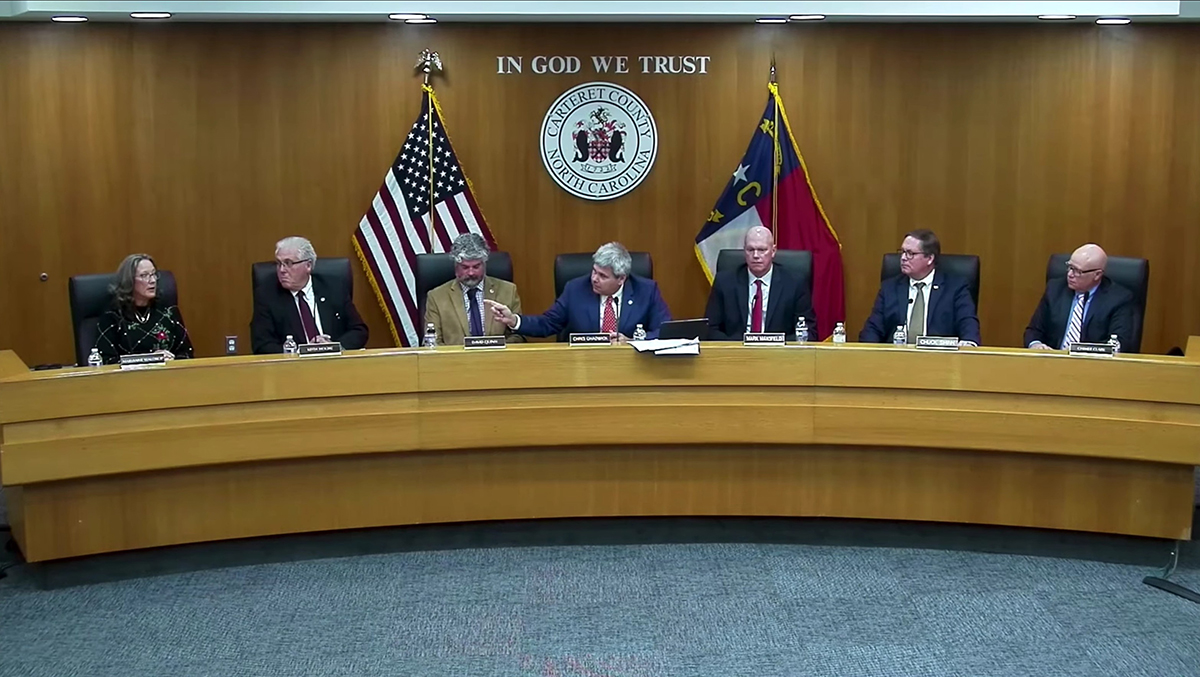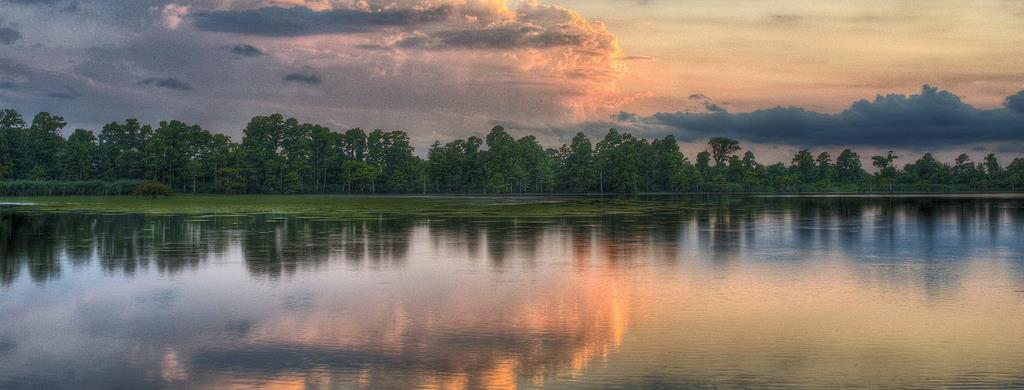
HYDE COUNTY — New barriers on tide gates installed at Lake Mattamuskeet are effectively blocking invasive carp from swimming into the state’s largest natural lake.
Biologists are now making preparations to remove the 4.5 million pounds of carp that are already in the lake — about 1 million of the hefty fish. Once they’re gone, much of the lake’s high turbidity and bad water clarity is expected to greatly improve.
Supporter Spotlight
“The problem is they’re bottom feeders,” Wendy Stanton, U.S. Fish and Wildlife Service biologist at Mattamuskeet National Wildlife Refuge, said in a recent interview, adding that the fish are constantly stirring up the bed searching for food. “It suspends all the sediment in lakes. It just exacerbates the problem.”
In late August, the refuge and the North Carolina Wildlife Resources Commission announced the award of a $1 million grant to remove the carp. The funds, provided from the U.S. Fish and Wildlife Service’s large invasive species grant program, will be available in fiscal year 2023. A smaller grant of $180,000 was awarded last year by the agency’s coastal funds program grant.
The project is one of the critical steps to improving the lake’s water quality that were identified in the Lake Mattamuskeet Watershed Restoration Plan. Approved in 2018, the effort is a partnership between the U.S. Fish and Wildlife Service, the North Carolina Wildlife Resources Commission, Hyde County, the North Carolina Coastal Federation and area stakeholders. A technical working group of scientists and researchers have developed recommendations for monitoring and studies that advance a science-based approach to bringing back the health of the lake.
An update on implementation of the restoration plan, including the carp removal, was presented at a virtual public meeting Monday, Sept. 27.
Stanton, who is also the acting refuge manager at Pocosin Lakes National Wildlife Refuge, explained that common carp can only reproduce in freshwater. When the urge hits, they have been heading to the lake from the saltier Pamlico Sound. Although the lake is equipped with tide gates to keep out the sound’s brackish water, the fish had been able to slip through them.
Supporter Spotlight
“They swim up through the outfall canals and other tributaries to get to fresh water,” she said.
Tapping grant funds, the Coastal Wildlife Refuge Society hired a local welder to retrofit debris barriers used at the lake’s tide gates at four outfall canals. Carp exclusion fences will also be installed at the five culverts that pass under N.C 94 causeway that bisects the lake. Spaced every two inches, the flat metal strips prevent about 97% of adult carp from entering from the Pamlico Sound, but don’t block other fish or crab.
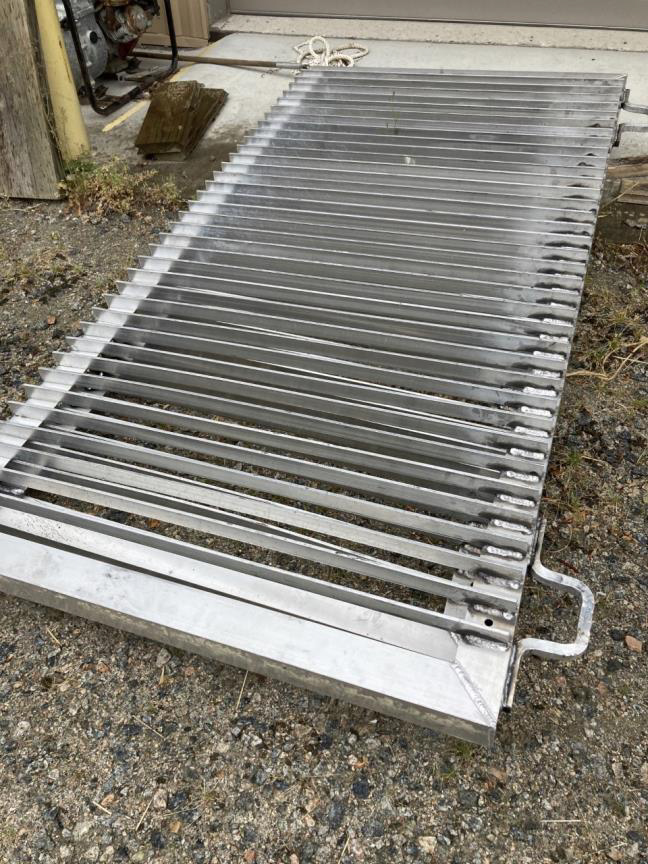
Back in the 1940s and 1950s, Stanton said, refuge managers determined that carp caused depletion of submerged aquatic vegetation, or SAV, in the lake. After the carp were removed with seine nets, the water quality quickly improved, and the underwater plants — an indicator of a healthy lake — soon grew back.
But common carp do not eat SAV, Stanton said.
Their crime, besides hogging the ecosystem, is their constant digging for food and stirring up sediment. In turn, the disturbed silt releases nitrogen and phosphorus pollutants and muddies the water, which decreases light reaching for the SAV to grow.
Eventually, the plants die, reducing the amount of dissolved oxygen in the water that aquatic life requires to thrive. The lake currently has very little, if any, submerged grasses and as a consequence, attracts fewer waterfowl and is less hospitable for fish and shellfish. It also has been plagued in warm months with noxious algal blooms.
Scientists have calculated that the body of a common carp is about 1% phosphorus and 6.5% nitrogen as measured by live weight, according to the Draft Environmental Assessment for Maximum Removal of Invasive Common Carp from Lake Mattamuskeet and Associated Canals. With the carp gone, nutrient load reduction would be 44,750 pounds of phosphorus and 290,878 pounds of nitrogen.
Common carp, scientific name Cyprinus carpio, is listed on the Global Invasive Species Database as one of the 100 world’s worst invasive alien species. The dubious recognition points to it being considered a major threat to biodiversity, as well as health, agriculture or other human interests.
According to the Chesapeake Bay Program, the fish were introduced into the U.S. in the mid-1800s as part of a carp cultivation program. Koi fish that stock small backyard ponds are a domesticated variety of common carp. Sturdy, adaptable and strong swimmers, the fish proceeded to invade nearly every waterway in the lower 48.
Not only does the female produce about 300,000 eggs per breeding season, the fish can live as long as 20 years. Common carp average about 2 feet long and up to 8 pounds, although they can reach 30 to 40 pounds. In fact, the North Carolina state record for the fish is 48 pounds, caught in March 1986 in a Mecklenburg County pond.
“What’s really interesting about the carp at Lake Mattamuskeet is that their ecology is different,” Stanton said. “They usually live until 3 or 4 years old. Although they have short life spans, they’re very prolific breeders.”
Which explains why 78,000 4-inch fingerlings of state hatchery-raised bluegill were released last winter at known spawning spots on either side of the 40,000-acre lake, she said. The fish are not only a popular game fish, they also are great at eating carp eggs and larvae.
Since bluegill hunt by sight, the conditions are not ideal, Stanton said, yet the fish have plenty of food while serving an important role in carp population control.
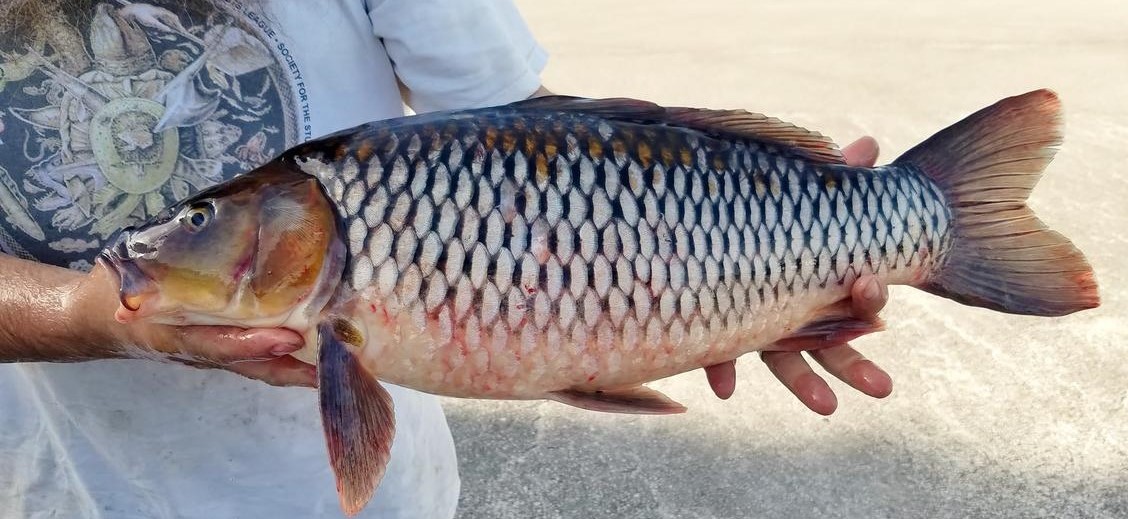
“They will be able to survive,” she said of the bluegill, “but they’re going to be more effective predators on their prey when the water quality improves.”
Once the grant money is in hand, the refuge is planning to place pound nets in deep parts of the lake to capture the carp. Trackers will be put on some of them, making them aptly-named “Judas fish,” Stanton said.
“That fish is going to lead us to where the fish are spawning out in the lake,” she explained.
The long nets can extend thousands of feet, attached between the fishers’ boats.
“Literally, they herd them into the net and then gently pull the fish across the lake,” she said. But the plan can be adjusted as needed.
“We’re learning as we go,” she said. “This is a very adaptive approach.”
Students with East Carolina University’s CapStone project in December 2020 completed a hoist system to lift the carp from the netted enclosures.
Local fishers will be invited to apply for a low-cost, special-use permit to fish for as much free carp as they want. Potential markets include fee fishing ponds, commercial fish markets, chum and crab bait for recreational and commercial fishers, and fish meal for animal food. They could also be used as fertilizer, as long as the carp was combined with a binder to counter its tendency to liquify.
Although the carp has passed muster for human consumption — it has been tested for PCBs, mercury and cyanobacteria — and is considered a tasty fish, it has a lot of bones. It is not listed as a gamefish by the North Carolina Wildlife Resources Commission, but historically common carp has been a food source for people.
“We don’t want the carp to be wasted,” Stanton said.
Between removal of nearly all the carp, and stocking with bluegill, she said that the refuge anticipates that about 16,000 acres of the lake will be restored.
It’s a “heavy lift,” she added, because it has to be done in less than two years to outsmart the carp’s reproductive responses. Like coyotes, the more carps’ population is decreased, the more they produce in the next generation.
In the coming months, the refuge’s “carp team” will seek assistance from local fishers in designing pound and other nets to use in the removal project. There will also be analysis of carp markets locally and nationally, and a project to retrofit additional carp barriers to enhance debris removal.
Ultimately, taking away biomass in the lake that translates to more than 4 million pounds of ecological disturbance will free up stakeholders to dig in to addressing the watershed’s nutrient pollution, drainage challenges and water level issues.
“This is going to be a long-term situation,” Stanton cautioned. “It took years and years and years for this lake to be in this condition. If we can get this carp out, it’s going to be a milestone.”




